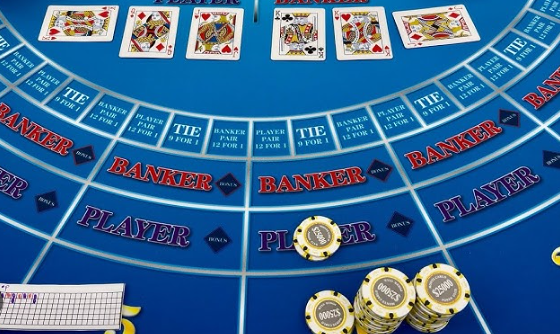Many casino table games have existed in various forms for centuries, giving players ample time to develop unique twists on the classics. Baccarat has followed this path of evolution, resulting in variations such as Chemin de Fer.
Both beginners and seasoned baccarat players appreciate Chemin de Fer for its distinct format and the broader range of choices it offers during gameplay.
However, before placing your first wager, it’s essential to understand how these differences can affect the odds compared to other versions of baccarat.
What Is Chemin de Fer Baccarat?
As the name implies, Chemin de Fer originated in France, where players in the 19th century adapted earlier forms of baccarat. Historical accounts suggest that the game may have reached French nobility through Roman influences or Asian traders.
Since its emergence, strategic approaches to Chemin de Fer have evolved by analyzing both its common ground with other baccarat variants and the unique features that set it apart. Like other forms of baccarat, the goal remains to achieve a hand total closest to nine.
However, Chemin de Fer introduces several notable differences—primarily in its structure and gameplay.
How Does It Differ from Other Baccarat Variants?

Among the various forms of baccarat, Chemin de Fer is especially popular with players who value strategic flexibility. Unlike more rigid versions such as Punto Banco, Chemin de Fer allows participants to take turns serving as the banker.
This variation also tends to involve higher stakes than games like mini baccarat. The reason? The player acting as the banker sets the amount wagered for each “coup” (the term used for a round or hand in baccarat), and the other players can either accept, match, or decline the proposed amount.
Chemin de Fer is also unique in that it uses six decks of cards, while versions like Baccarat Banque typically use only three. Though the structure may seem complex at first, the game’s rhythm becomes intuitive with a few rounds of play.
How to Play Chemin de Fer Baccarat
For new players, understanding how the banker role rotates is often the first focus—but there are many other key aspects to learn. Chemin de Fer is designed so that every player has a chance to win, but only one can claim victory in each coup.
Each round begins with the designated player deciding whether they want to assume the role of banker. If they accept, they propose the stake for that round. Other players may respond by matching, exceeding, or countering the offer.
The player willing to risk the most becomes the official challenger for that coup. However, it’s worth noting that any amount over the banker’s stake is typically disregarded, since the banker determines the maximum risk.
Once the stakes are set, the dealer distributes two cards to both the banker and the opposing player—usually dealt face down.
If either hand totals eight or nine (a “natural”), that hand wins automatically, and the next round begins. If neither hand is a natural, both the banker and the opposing player must decide whether to draw a third card, depending on their totals.
After any additional cards are drawn, the hands are revealed. The one closest to a total of nine wins the coup.
Top Strategies for Playing Chemin de Fer Baccarat

Improving your skills in baccarat—especially in Chemin de Fer—is largely about balancing risk and reward. A key part of smart play is effective bankroll management.
Before joining a game or sitting down at the table, set a clear budget and decide how many coups you intend to play. Once that’s established, plan how you’ll distribute your funds across those rounds.
To safeguard your bankroll, stick to your allocations and avoid joining coups that exceed your budget. If the stakes are too high, consider switching tables, choosing a different game, or returning later.
Another valuable strategy is to recognize that the banker holds a statistical edge in Chemin de Fer. With that in mind, it may be wise to allocate a larger portion of your bankroll to the rounds where you’re acting as the banker.


